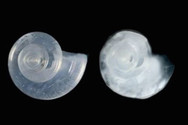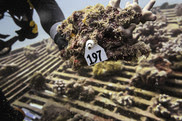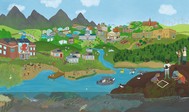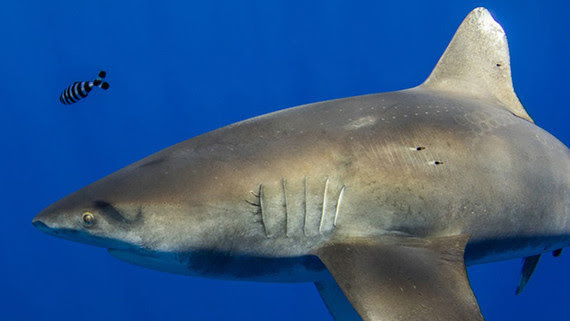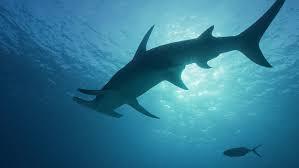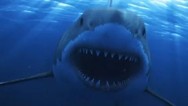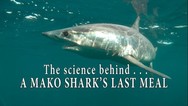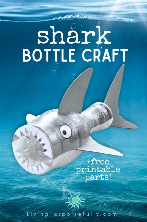The Watch - News You Can Use from NOAA Planet Stewards. August 11, 2020
NOAA's National Ocean Service sent this bulletin at 08/11/2020 02:46 PM EDT
Webinar – Perceptions of Sharks: Is the “Man-Eating” Fear Justified?Tuesday, August 18 • 7:00 pm ET, Symone Johnson Barkley National Aquarium
Shark Videos from NOAA
Shark STEAM Activity
News: Great white sharks swim among us at Southern California beaches A Webinar with Dr. Kathryn Sullivan: Challenger Deep Dive: From the Heights to the DepthsWed, Aug 19, 2020 12:00 AM - 1:00 AM EDT
|

Former NOAA Administrator Dr. Kathryn Sullivan is the first person to both walk in space and reach the deepest spot in the ocean, Challenger Deep in the southern end of the Marianas Trench. In this webinar, she will talk about this historic dive, her experience as an astronaut, and her work with Caladan Oceanic's Hadal Exploration System - the only submarine certified with an official "depth unlimited" rating. She was recognized as one of the 46 distinguished First Women by Time Magazine (2017), the 15 Women Changing the World by the World Economic Forum (2015) and Time’s 100 Most Influential People (2014). Among numerous other awards.Register and learn more here > |
WEBINAR
The Path Forward: Higher Education, August 13 - 3:00 p.m. ET
From The Washington Post and University of Virginia
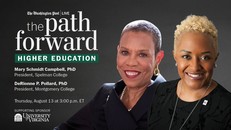
As the nation and economy continue to face the unprecedented challenges of COVID-19, many colleges and universities are delaying plans to begin their fall semesters with in-person instruction. With several states now experiencing spikes of coronavirus cases, school administrators are examining more cautious strategies to employ such as online learning and canceling athletic events altogether. Washington Post Live will examine the outsized impact of the COVID-19 pandemic on the U.S. higher education system and what the college experience could look like in the years to come. Join the conversation. Streamed here: wapo.st/higheredu2020. Register for a reminder |
WEBINAR
Coral Eco-immunity in a Disease Landscape of Unknowns,
August 13, 4 pm - 5 pm ET
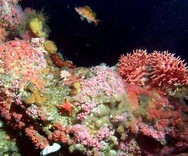
Coral pathogens are known to be incredibly hard to diagnose, which presents a big challenge for coral reef practitioners. How can you measure coral reef health if you can't make a clear disease diagnosis? This seminar will cover what The Cnidarian Immunity Laboratory is doing to tackle this issue. In summation this seminar will present meaningful information for understanding the coral immune system, how it responds to disease, and what the future holds for coral disease immuno-transcriptomics and coral health diagnostics. Join us here. Click the microphone at the top of the screen to connect audio. |
Webinar:
The Long Island Sound Study: It’s Marshes and Wetlands
August 18, 2020 from 10 - 11 AM ET

What is the impact of sea-level rise on Long Island Sound’s coastal marshes? How can wetlands help reduce greenhouse gases in the atmosphere and nutrients discharging into the Sound? If you think your students would want to know the answers, a webinar scheduled this August might be for you. Join to learn about the Long Island Sound Study and research’s findings. Find the MODULE here and REGISTER to receive a link to join the webinar. |
Join Webinars from the National Science Teaching Association!
Teacher Tip Tuesday: Distance Learning Strategies,
Aug. 25, 2020; 12 pm ET
How can we create equitable, distance-learning sensemaking (actively trying to figure out how the world works or designing solutions to problems) experiences for our students when it comes to asking them to use materials from around their homes to do so? Join this webinar to find out!
August 27 Science Update: NASA STEAM Innovation Lab–Explore, Create, Share! 7 pm ET
This web seminar will highlight educational technology-based activities from NASA’s STEM Innovation Lab; a think tank and makerspace with an emphasis on earth and space science content applications. Ideas generated in the lab are captured, collected and shared with educators, educational technology researchers and maker-space enthusiasts around the world.
WEBINAR: Arctic Research After Hours, August 27 7:00pm ET
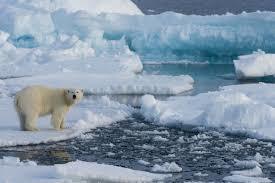
Learn about the changes taking place in the Arctic and their predicted impacts. You’ll hear about the applications of autonomous underwater robots for exploring and studying the Arctic, as well as efforts to communicate science to inform and engage young people around the world. Attendees will be able to ask questions via the Zoom chat feature during a Q&A session after the presentation. After Hours lectures are designed for an adult audience, but all ages are welcome to watch. Register Now. |
WEBINAR
Tune in to the Coastal Resilience Webinar Series: Developing a Planning Range for Sea-Level Rise
Aug. 27, 2020, 2 pm - 3 pm ET
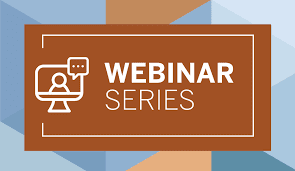
“Coastal Resilience Webinar Series” is open to all interested participants. Registration links are included above. Stay tuned for additional webinar topics sponsored by the Climate and Resilience Community of Practice including updates on community projects, neighborhood resilience, the science of economics, and more! |
This Is What a Scientist Looks Like

The idea is simple: Students who see themselves in science are more likely to imagine themselves working in the field. A project called “I Am A Scientist” is giving middle and high school students the opportunity to interact with modern-day researchers — breaking down barriers like race, gender, and personal interests. It provides teachers with toolkits containing stories, posters, and career resources showcasing 22 scientists’ range of personalities, backgrounds, pathways, and passions. Find these resources here. |
Articles of Note for STEM Educators at this time
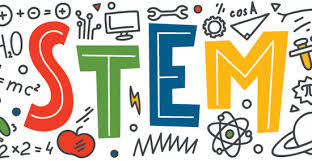
The Watch focuses on providing a wealth of STEM activities and opportunities to engage learners in and outside the classroom usually. The following three articles deserve to be shared and should provide you with worthwhile “food for thought” for this year’s teaching.
|

World Ocean Radio Podcast
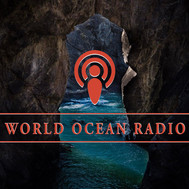
World Ocean Radio broadcased its Slavery: Heritage and Identity series recently. In one episode, the history of La Amistad is discussed – the 19th century Spanish slave ship that ran kidnapped human cargo to Cuba to support the sugar plantations. La Amistad is famous for the 1839 slave uprising and capture of the vessel, the ensuing legal battle for their freedom, and the construction effort of a replica ship launched in 2000 to continue an international conversation about slavery and its impacts on African Americans' past, present and future. WORLD OCEAN RADIO is a weekly series of five-minute audio essays broadcast by college and community radio stations worldwide. Find us at iTunes or wherever you listen to your favorite podcasts. If you prefer the written word, visit Medium.com/@TheW2O to read this week's blog. Find current podcasts here. |
Hoʻokūkū Kiʻi Kai Ocean Photo Contest
For Educators, Students, and the public (13 years old and up)
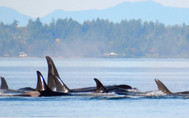
Waikiki Aquarium, in partnership with, NOAA Hawaiian Islands Humpback Whale National Marine Sanctuary, is hosting a photo contest from July 31 through September 7 (Labor Day). Send us your best photos of the ocean and your marine sanctuary. Enter for your chance to win prizes from Pro Camera Hawaii and Huish Outdoors. Winning photos will be shared on Waikiki Aquariumʻs social media and website; be featured in the NOAA National Marine Sanctuary newsletter; and be a part of a 2021 marine tide calendar. Participants must ‘Like’ and ‘Follow’ the Waikiki Aquarium Facebook page to be eligible. For the full description and to enter visit our "Ocean Photo Contest" tab on Facebook or visit http://www.waikikiaquarium.org/interact/special-events/ocean-photo-contest/ |
Design The 2021 Ocean Count T-Shirt
Submission Deadline: Sept. 30, 2020
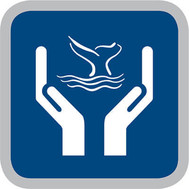
For Educators, Students and the Public: Every year in January, February, and March, volunteers count whales from the shores of Oʻahu, Kauaʻi, and Hawaiʻi Island for the annual Sanctuary Ocean Count. The goal of the Ocean Count is to increase public awareness of the sanctuary and current ocean issues. For 2021, the National Marine Sanctuary Foundation is hosting a t-shirt design contest. The top finalists’ designs will appear on our website, and the winner will receive $500 for the design, which we will use on the 2021 Ocean Count t-shirt. Learn more at https://oceancount.org. |
Blue Beacon Series: Hidden Pacific Film Screening, Aug. 13th
Join the National Marine Sanctuary Foundation on August 13 for a virtual advance screening of Hidden Pacific, a pioneering film profiling the Pacific Ocean's protected and marine national monuments and national wildlife refuge islands. |
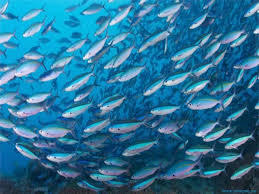 |
Students Making a Difference: International Climate Action Challenge,
Kick-Off Event: Aug. 26 and 27; Register by Aug. 31, 2020

Are you looking for a way to help your students or your youth group build community and make a difference this year, even while maintaining social distancing? Be part of the 2020 International Climate Action Challenge, hosted by @GreenTeam Academy. Challengers receive a free action plan, mentoring, structure, and community to help them launch their environmental or community initiatives within 90 days! Register for free by August 31, 2020. Attend the Kick-Off Event on August 26 & 27. Find out more: www.climateactionchallenge.net |

World Oceans Day 2020 Annual Report |

The worldwide movement for a sustainable society and a healthy blue planet continued to grow for World Oceans Day 2020 in spite of the global pandemic. Thanks to the involvement of diverse partners, sponsors, youth, and other leaders, this year we helped to activate, connect, and demonstrate global action for our shared ocean with a renewed commitment to equity and inclusion. Together, we advanced the collective mission with in-person and online events, social media campaigns, a global petition campaign, and youth-led activities. See the report... |

From NOAA: Learning Across Languages and Locations

Marine debris is a constant and challenging threat to communities all over the world. It can travel on currents across the ocean, reach remote shorelines where very few people live, and cause major problems for both people and wildlife. As students and teachers prepare for a new year of learning, NOAA is highlighting educational marine debris resources that highlight the problem in different locations and different languages. Whether you call it desechos marinos ‘ōpala kai, or marine debris, we have resources for you! Learn more |
NSTA’s Daily Dos

The NSTA Daily Do is an open educational resource (OER) used by educators and families to provide students distance and home science learning. Check out recent NSTA Daily Dos. Middle Level: How Do Lakes Freeze? Elementary: How Can Fish Survive in a Frozen Lake? |
FOUR ACTIVITIES FROM HHMI BIOINTERACTIVE
|
ACTIVITY ONE: Finding Credible Source Materials for HS Science news articles are a great way to learn about new ideas, discoveries, and research. But it’s important for students to be able to evaluate the credibility of sources of information. In this new activity, students read and analyze a news article to determine whether the article is trustworthy. |
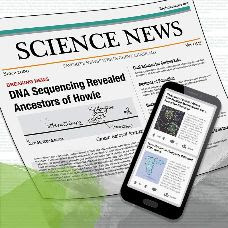 |
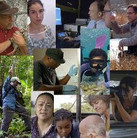
ACTIVITY TWO: Scientists at Work for High School Students In the “Scientist Role Models” activity, students select and research a scientist featured in HHMI “Scientists at Work” videos. Two versions of the activity are available: one in which students outline a brief profile of the scientist and another in which they write a more extended essay. |
|
ACTIVITY THREE: Question Authority for HS Students What defines a scientific question? In this updated activity, students practice writing scientific questions, designing experiments to address these questions, and then determining the research questions being asked from reading journal article titles. |
 |
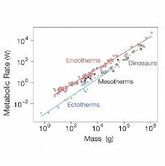
ACTIVITY FOUR: Primary Consumers for College Students Reading the primary literature provides an opportunity for students to practice data analysis and higher-order thinking skills, while providing them insight into the dynamic nature of science. This Educator Voices video describes how to introduces community college students to the primary literature using Science in the Classroom. |

Grants, Contests
- Pitsco Education Grants, Deadline August 31, 2020
- Toshiba America Foundation Science and Math Improvement Grants, Through Sept. 1, 2020
- Sanctuary Photo Contest; May 23 through September 7, 2020
- Fulbright U.S. Scholar Program, Deadline Sept. 15, 2020
- Federal Funding Opportunity; Due October 22, 2020.
Internship Opennings
- The Wilson Center’s Science and Technology Innovation Program (STIP) for graduate-level research and undergraduate-level research. Learn more. Deadlines: Fall Internship: August 16; Spring Internship: November 15; Summer Internship: March 15
- From ocean plastics to disinformation, the Wilson Center’s Serious Games Initiative is gearing up for several new projects this fall and is seeking interns interested in the public communication of science. Find out more.

Retirement News
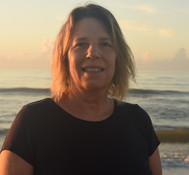 |
Zdenka Saba Willis, L.L.D. retired from the National Oceanic and Atmospheric Administration’s (NOAA) Senior Executive Service where she was the founding Director of the United States Integrated Ocean Observing System (IOOS®) Office. From 2006 to 2007, she was the Director of NOAA’s National Oceanographic Data Center. Ms. Willis retired with the rank of Captain from the United States Navy after a long list of accomplishments as a NOAA Meteorology and Oceanography officer, We thank her for her remarkable service. |
-
States’ Renewable Portfolio and Goals
-
Harvard’s Transportation, Equity, Climate, and Health Study Analyzes potential health benefits of transportation policies aimed at curbing climate change
-
Transportation: West Coast to Build Electric Highway for Diesel Truck Transport
-
It is Past Time to Talk about Racism in STEM
-
Use of plastic bags in England drops by 59% in a year
-
How Currents Carry Marine Debris to the Hawaiian Islands
-
You Must Not ‘Do Your Own Research’ When It Comes To Science
-
NOAA Partners with Scripps on Unmanned Systems
-
The fascinating and controversial history behind hurricane names
-
The Best Weather Apps
-
‘What choice do we have?’ As the Arctic warms, Alaska Inupiat adapt
-
Bipartisan Bill Would Establish Multi-Agency Effort for Carbon Removal
-
Submerged vegetation is one of the most productive fish habitats on earth
-
Hot ocean waters along East Coast are drawing in ‘weird’ fish and supercharging hurricanes
-
Meet The Lockheed WP-3D Also Called The “Hurricane Hunter
-
How Underwater Microphones Are Helping Scientists Measure Climate Change
-
These 3D printed tiles are helping restore devastated coral reefs
-
Isaias was a hurricane. Why do tropical weather systems cause tornadoes?
-
Tropical Storm Isaias marks one of the earliest hurricane seasons ever
-
Time dampens the urgency of climate change
-
The Case for Marine Protected Areas
-
Surface Clean-Up Technology Won’t Solve Ocean Plastic Problem, According To Study
-
Smaller-than-expected Gulf of Mexico ‘dead zone’ measured
-
Naig: There's More Conservation Work
-
Seabirds are valuable...and so is their poop, which is worth millions
Sign up to our email list and receive invitations to future events.
Have questions, comments, or suggestions? We love to hear from you! Email us here to suggest content and include:
-
Event/announcement title
-
Date and time if applicable
-
One paragraph description
-
Link or email address for more information
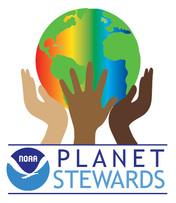 |
NOAA Planet Stewards Education Program
Having trouble viewing this email? View it as a Web page.






